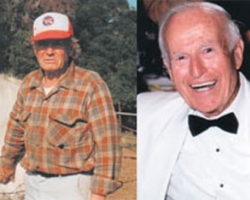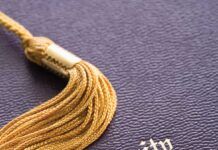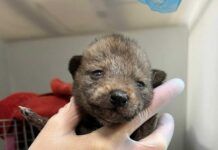I have written in the past that I don’t do obits. I like to call them “stories of life.” This past week I have lost two friends of many years, Fred Knoll and John Finn, and both deserve that farewell adulation.
I met John Finn about 20 years ago, sometime in late 1991. I was doing stories at that time on Pearl Harbor survivors and Finn was one of them. The Star-News was running a special edition on the 50th anniversary of the attack and we were trying to get as many personal stories as possible.
John Finn died last week at his home in the Veteran’s Center in Chula Vista at the age of 100. He was the last surviving Medal of Honor recipient from the Battle of Pearl Harbor. I recalled the interview that I had with Finn back in ’91. We had traveled to Boulevard to his ranch that bordered on Indian Reservation property. At that time he and his late wife Alice lived and worked this 97-acre East County property. I wrote at that time “…he works on the various cars and tractors that are scattered about the premises, taking care of numerous animals (19 dogs, for example) and putters about the place he has called home for more than 30 years.”
Regardless of whom one talks to about Finn he is going to find out that this was an individual who was one-of-a-kind. I recall seeing him as the rancher that he was and wondering if this was the same person who so valiantly had fought back an enemy that had provokingly attacked him that December Sunday morning, which now seemed so long ago.
Finn, if you recall, was not at Pearl Harbor. His station was in Kaneohe at the Naval Air Station. This was half the island away from Pearl Harbor but was an installation that was important enough for the enemy’s aim to destroy it. Finn, at the time a chief petty officer, was attached to a patrol squadron of 12 PBY sea planes. Altogether there were 36 PBYs at the station, only three survived to fly again. In addition to the destruction of planes there was extensive damage to buildings, hangars and other units of the base.
There actually was little the sailors at the air station could do in fighting back. There were no guns mounted for retaliation. Finn, however, was the industrious type. He found a way to set up a mount and, using the machine guns usually mounted on the aircraft, kept up almost a steady fire at the relentless passes by the enemy planes. Though wounded quite severely he remained at his station for hours before receiving medical aid.
I have seen Finn on many occasions over the years. He always greets me graciously and we have pleasant conversations. That was his manner. On speaking with Art Herriford, the president of the Pearl Harbor Survivors Association, he told me of sitting at dinner with Finn at a function at the Nimitz Museum in Fredericksburg, Texas, and he said that most of the talk was about restoring vintage automobiles. As we said, that was John Finn, a one of a kind.
I knew Fred Knoll much longer. We became acquainted about 60 years ago and became good friends probably because of two reasons: we attended the same church and our common love for baseball. He died last week at the age of 97.
Knoll made his home in Bonita in 1947, thus becoming a virtual legend in the valley. He and his wife Mary Kathryn, who preceded him in death, designed and built the home on Bonita Mesa that they shared with their five children, Fritz, Nancy, Maryann, Paul and David.
Knoll started out in life as a ball player. I recall interviewing him many years ago in his home and the major talk was of baseball. He had his start with some of the semi-pro clubs near his birth home in Illinois. This was the apprenticeship that many young players received in those days. I remember he reminded me that any boy who made the varsity ball team in high school envisioned himself as a major leaguer. Knoll was no exception.
In retrospect it is felt that Knoll could have made it. He was a slick fielding infielder who could also hit. He worked his way up in the professional ranks playing a bit with the Pacific Coast League San Diego Padres. But there were two factors that deterred him. He met Mary Kathryn and married and realized that the money in minor league ball was not enough to justify the many days that he would be away from home. So he settled for the plumbing profession, which supplied him and his family with a better-than-an-adequate living.
Knoll was a founding parishioner at Bonita’s Corpus Christi Church and prior to that at St. Michael’s in Paradise Hills. Though he was employed full time, he still found time for assisting others. For many years he was an assistant baseball coach at Southwestern College. And he, of course, liked to get together with others and spin tales of the game. In recent times he was a docent at the Bonita Museum. I would drop in and would either praise or bemoan the play of the Padres.
Fred Knoll is gone. The valley is less rich because of this.












